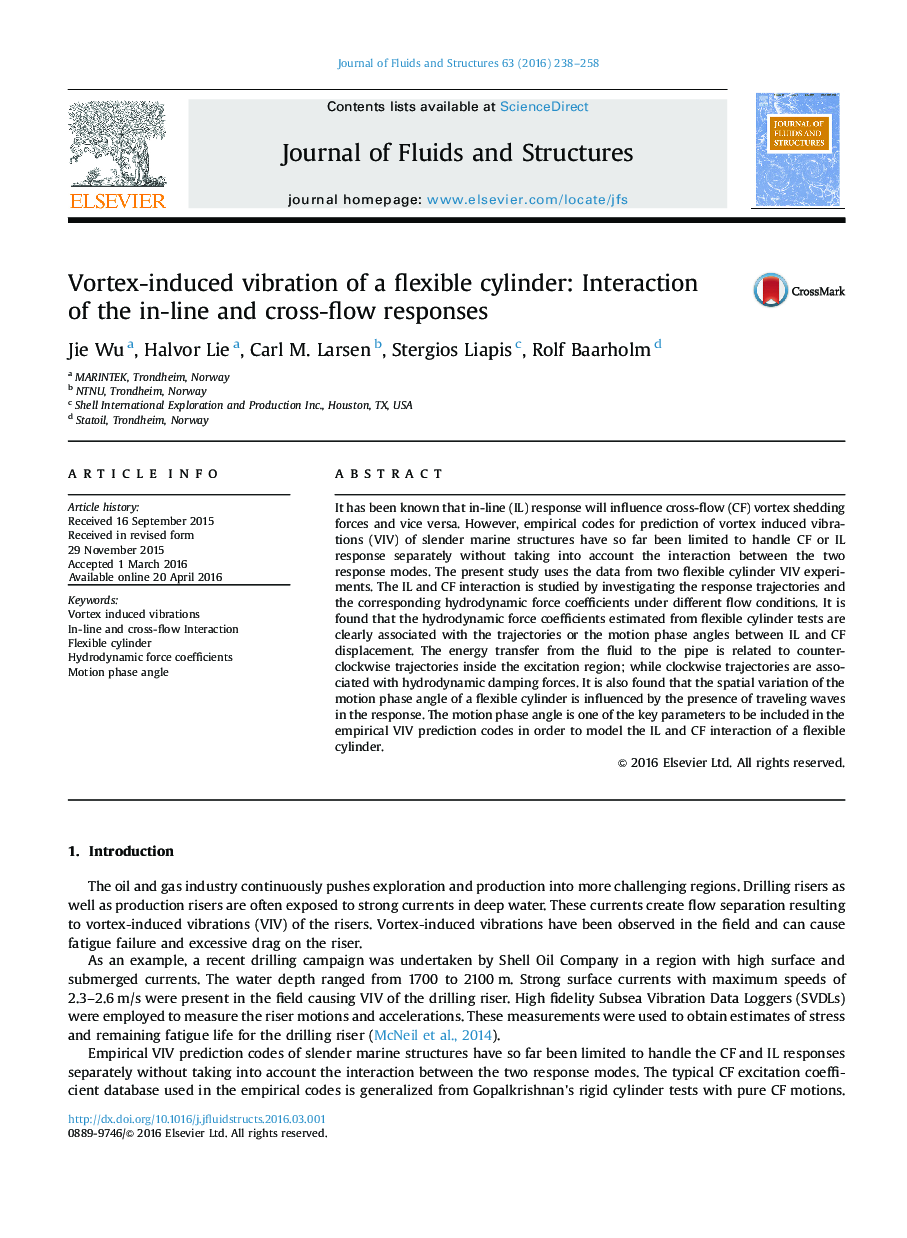| Article ID | Journal | Published Year | Pages | File Type |
|---|---|---|---|---|
| 7175915 | Journal of Fluids and Structures | 2016 | 21 Pages |
Abstract
It has been known that in-line (IL) response will influence cross-flow (CF) vortex shedding forces and vice versa. However, empirical codes for prediction of vortex induced vibrations (VIV) of slender marine structures have so far been limited to handle CF or IL response separately without taking into account the interaction between the two response modes. The present study uses the data from two flexible cylinder VIV experiments. The IL and CF interaction is studied by investigating the response trajectories and the corresponding hydrodynamic force coefficients under different flow conditions. It is found that the hydrodynamic force coefficients estimated from flexible cylinder tests are clearly associated with the trajectories or the motion phase angles between IL and CF displacement. The energy transfer from the fluid to the pipe is related to counter-clockwise trajectories inside the excitation region; while clockwise trajectories are associated with hydrodynamic damping forces. It is also found that the spatial variation of the motion phase angle of a flexible cylinder is influenced by the presence of traveling waves in the response. The motion phase angle is one of the key parameters to be included in the empirical VIV prediction codes in order to model the IL and CF interaction of a flexible cylinder.
Related Topics
Physical Sciences and Engineering
Engineering
Mechanical Engineering
Authors
Jie Wu, Halvor Lie, Carl M. Larsen, Stergios Liapis, Rolf Baarholm,
